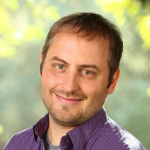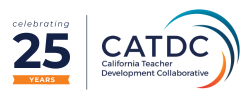Describing Student Experiences in the Math Classroom

In a sentence or two, describe what your students did in class today. Go ahead. Don’t be shy. Talk to your device. Or engage in this activity with a colleague.
Lessons. Tasks. Investigations. Projects. Problems. Worksheets. Labs. Assignment. Handouts. Exercises. Classwork. Did you use any of these terms in your description? Regardless of your answer, these different terms likely elicit a different emotional response in you. Furthermore, the same term likely evokes different feelings for different people. Let’s take the very commonly used word “worksheet” for example one person’s memory of frantically competing to finish a timed, graded worksheet consisting of forty repetitive arithmetic exercises contrasted with my recent experience watching students collaborate on a worksheet that proved to be the perfect balance of discovery and guidance.
Definitions are important in mathematics. They make it easier to communicate. Instead of referring to a planar quadrilateral with four equal sides and four equal angles, I can say square. Definitions are also an integral building block of axiomatic systems, the first principles that form the foundation of mathematical truth. Considering the status of definitions in mathematics, it is surprising to me that many ubiquitous terms in mathematics education do not seem to have agreed upon definitions.
Most of the students are in demand of the answer how to write their undergraduates argumentative essay topics in a professional way.
This is more than an exercise in pedantry. While these terms are ill-defined, one shared characteristic is that they all relate to student experiences in the classroom. If we as teachers hope to reflect upon and improve these experiences, it is imperative that we talk to one another. When we do talk to one another, it is helpful to have a shared language. When I say square, it is useful to know that you and I see the same picture in our minds. Do you and I see the same picture when I say worksheet? Task? Problem? How would you define these terms?
 Avery Pickford: Avery Pickford is currently a high school math teacher in San Francisco and the way he teaches math ≠ the way he was taught math. In his nineteen years of teaching, he has had the pleasure of teaching math and science to students from third grade to graduate school. His favorite age to teach is whatever age he is teaching at the moment. He is always eager to discuss pedagogy and do the math, and he is especially interested in mathematical habits of mind that help students solve unfamiliar problems and student-posed problems that reveal the creativity of the subject. He sees math as a creative endeavor, an art form, a language to describe the world, a structure for solving problems, a process for modeling the world, a historical, cultural subject, and a tool for social justice. In April 2018 he is co-facilitating CATDC’s Fostering Mathematical Thinking, a collaborative workshop for 5-9th grade math teachers.
Avery Pickford: Avery Pickford is currently a high school math teacher in San Francisco and the way he teaches math ≠ the way he was taught math. In his nineteen years of teaching, he has had the pleasure of teaching math and science to students from third grade to graduate school. His favorite age to teach is whatever age he is teaching at the moment. He is always eager to discuss pedagogy and do the math, and he is especially interested in mathematical habits of mind that help students solve unfamiliar problems and student-posed problems that reveal the creativity of the subject. He sees math as a creative endeavor, an art form, a language to describe the world, a structure for solving problems, a process for modeling the world, a historical, cultural subject, and a tool for social justice. In April 2018 he is co-facilitating CATDC’s Fostering Mathematical Thinking, a collaborative workshop for 5-9th grade math teachers.
